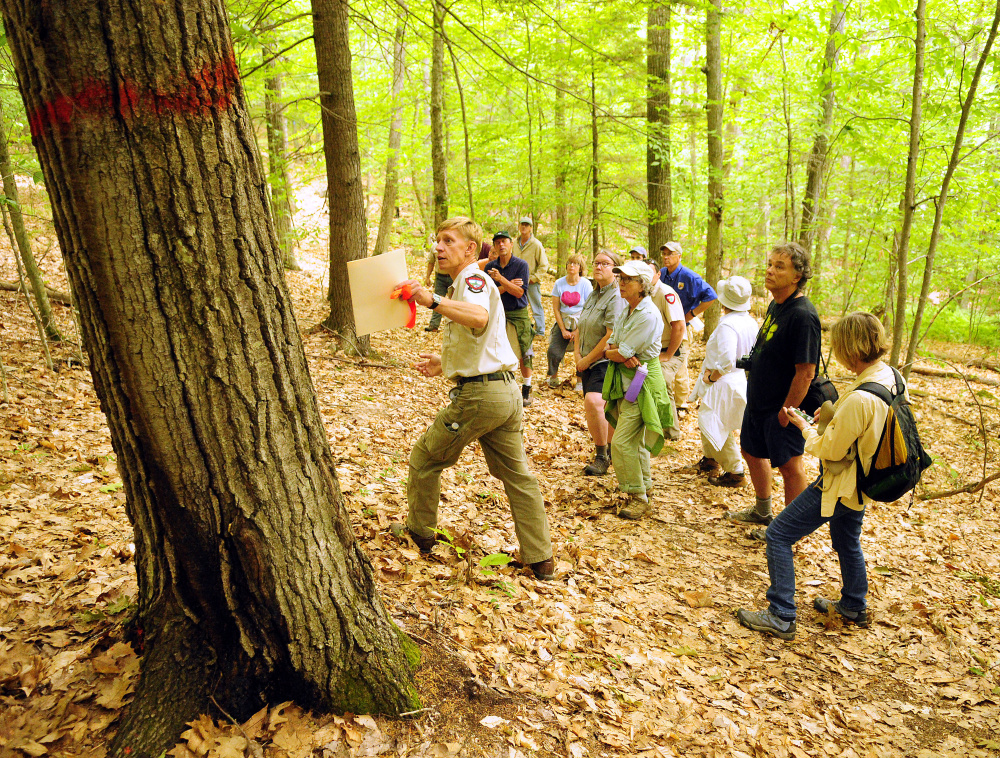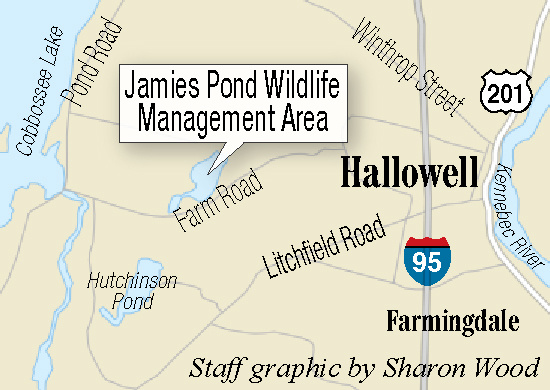A controversial timber harvesting project at the Jamies Pond Wildlife Management Area in Hallowell is set to begin this week, according to a state official.
Eric Hoar, a lands management biologist with the Department of Inland Fisheries and Wildlife, which owns Jamies Pond, said the contractor expects to arrive at the site on Wednesday.
Hoar said Travis Khiel, of Khiel Logging and Chipping, expects to begin work at the approximately 1,000-acre property in Hallowell, Farmingdale and Manchester on Meadow Hill Road, in Manchester. It’s the first timber harvesting project at Jamies Pond in more than 10 years.
When the agency’s plan was announced, it was met with criticism and questions from people afraid that their hiking and walking trails would be disturbed and forever changed. Hoar said Friday that no trails would be closed, but did advise people to use caution and common sense when they are near an area with an ongoing operation.
He said there hasn’t been much chatter from the public since June, but there’s been a continuing dialogue with residents and community organizations, including the Hallowell Conservation Commission.
Wildlife officials held a site walk at Jamies Pond in June to try to alleviate concerns.
G. Keel Kemper, a regional wildlife biologist for the agency, told the two dozen or so people who attended the walk that it’s not the agency’s intention to disrupt the management area’s vast and expansive trail system and to cut down 70 percent of the trees, as one woman feared.
Kemper said there will be harvesting activity on about 70 percent of the property, but that doesn’t mean they plan to cut 70 percent of the forest.
Throughout the process, agency officials have stressed that Jamies Pond is a wildlife management area and not a park, which means the responsibilities for its owner differ from those of a park.
“These lands were acquired to be managed for wildlife, and that is our primary objective,” Kemper said in June during an at-times lively public information session about the project. “‘Management’ is an active word, not a passive, and we’re not in the trail maintenance business.”
Throughout the 45-minute site walk, Hoar, who is the ground manager for the project, pointed out trees that will be removed and some that are marked to be retained, and he explained the reasons behind the markings.
Ted Elliott, of Augusta, who expressed his displeasure with the project to the Kennebec Journal in June, said he was cautiously optimistic that the agency would do a good job.
The project, which has been in the planning stages for several years, includes removal of certain trees to allow other, younger trees to flourish, thus increasing foraging opportunities for deer, snowshoe hare and turkey. Work is also being done on a deer wintering area to increase browse and patch openings in aspen-dominated areas to provide new habitat for grouse and woodcock.
“The project is very much geared toward wildlife and wildlife habitat first and foremost,” said Ryan Robicheau, wildlife management section supervisor for the wildlife department.
Robicheau and the department acknowledge that Jamies Pond is a popular destination for hikers, cross-country skiers and fishermen, but it is not a park.
“(It’s look) will change after we’re done,” Robicheau said, “but we don’t intend to impact people’s use or enjoyment of the property.”
The project is expected to continue through the summer before picking back up this winter, and officials said work will take place next summer and winter until the project is complete.
The wildlife agency manages 62 wildlife management areas in the state, representing about 105,000 acres.
Jason Pafundi — 621-5663
Twitter: @jasonpafundiKJ
Send questions/comments to the editors.




